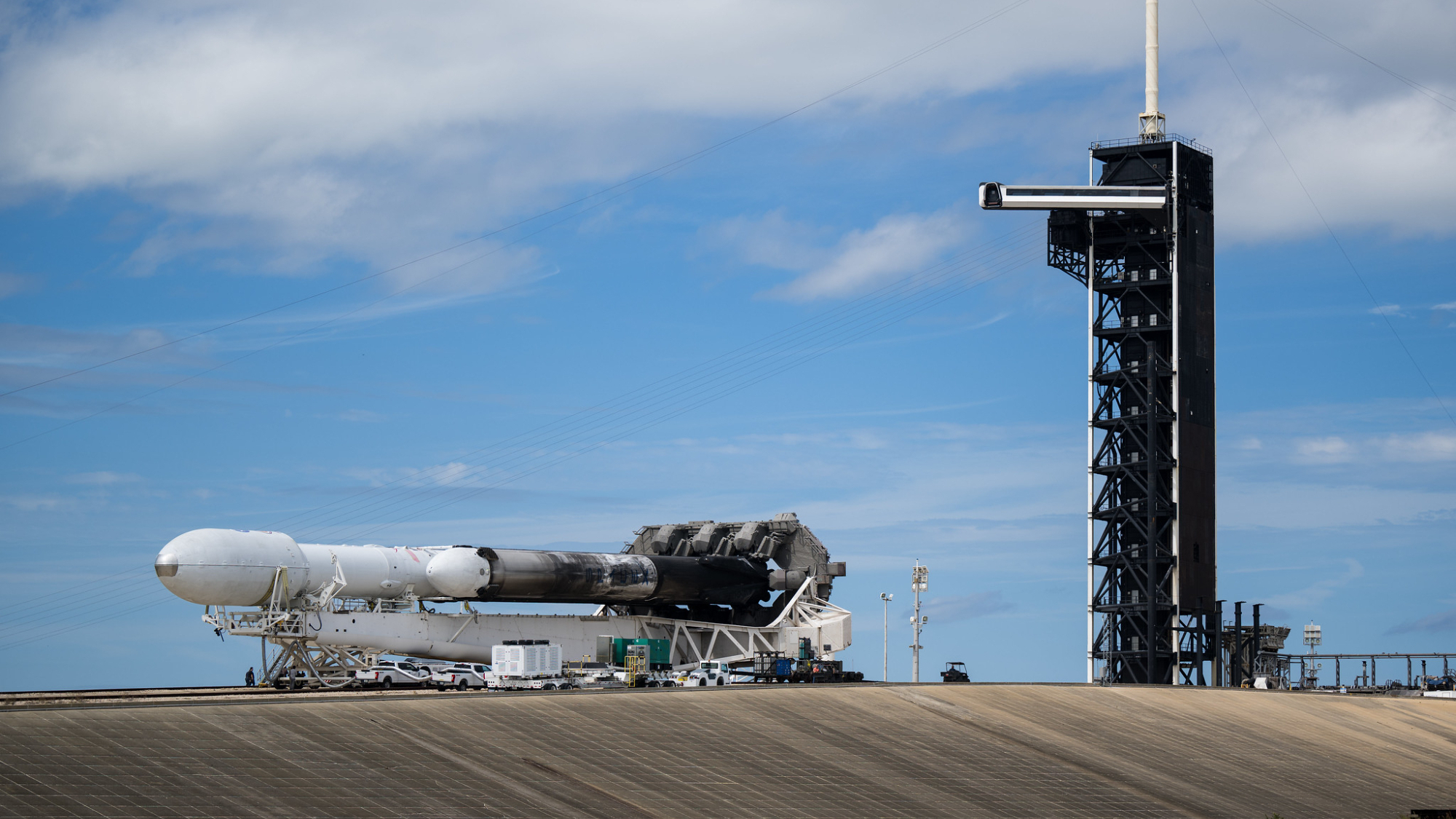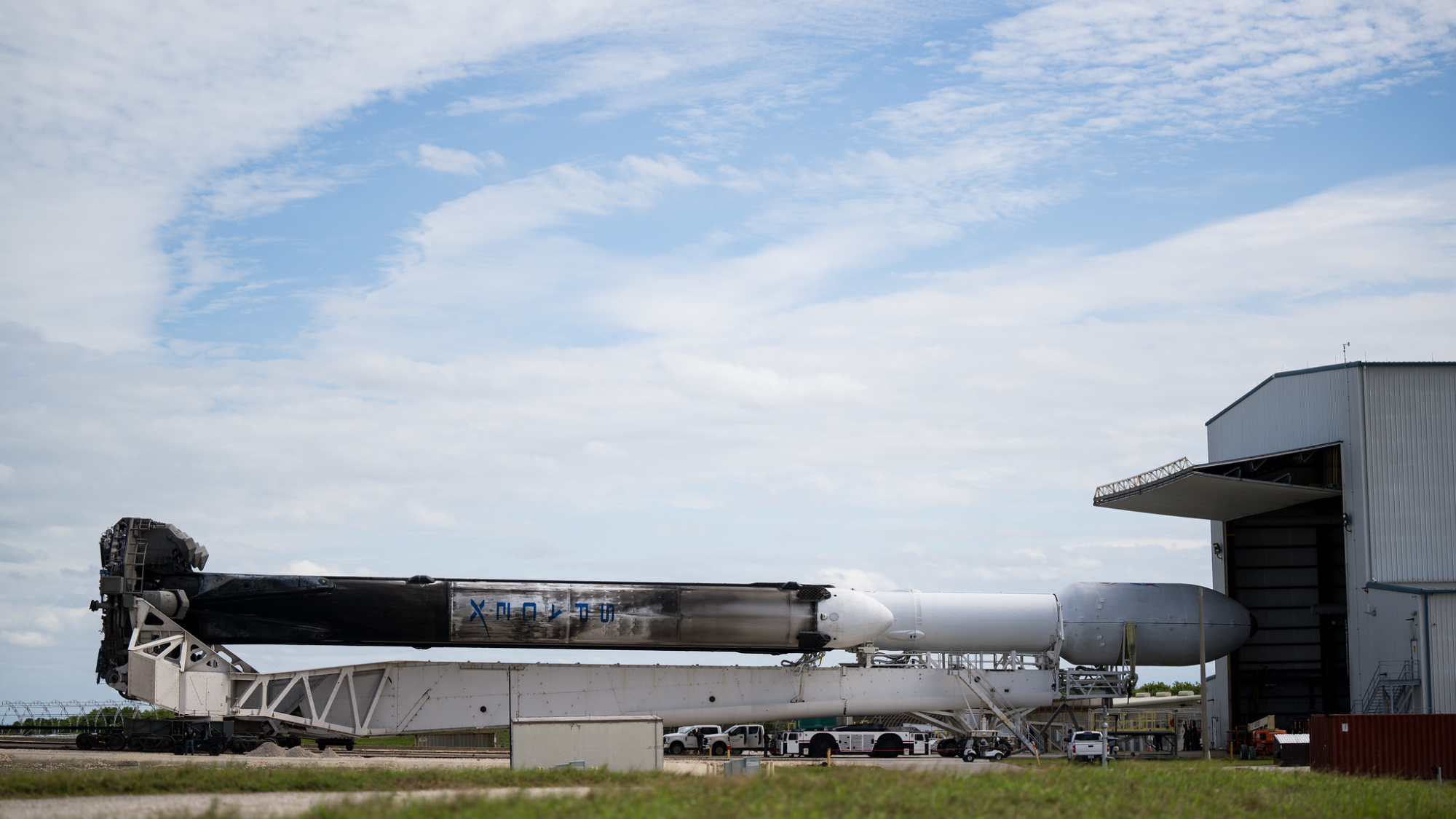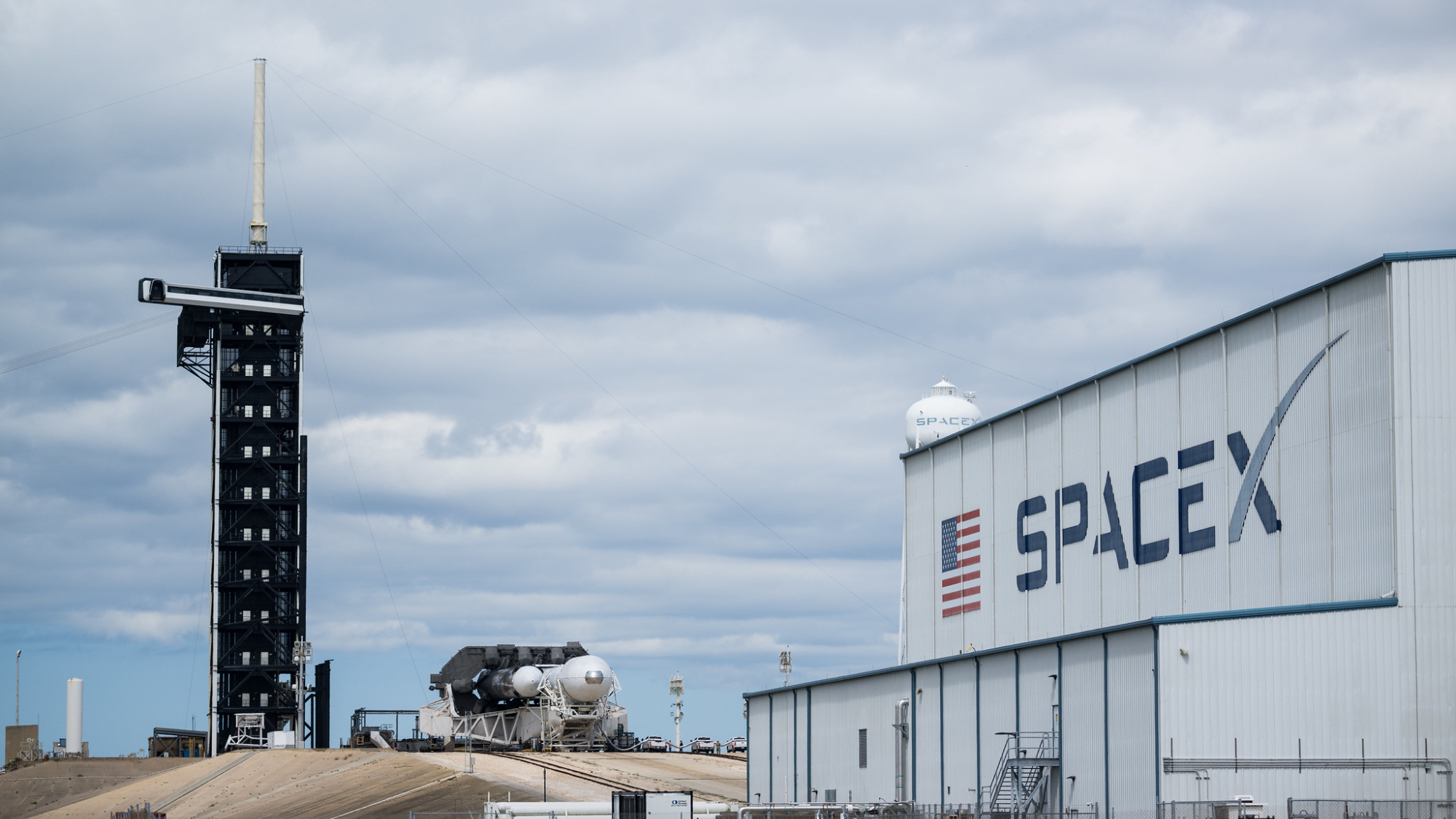
SpaceX's powerful Falcon Heavy rocket has made it to the pad ahead of its planned launch this week.
SpaceX rolled the Falcon Heavy out to Launch Complex 39A at NASA's Kennedy Space Center on Tuesday (Oct. 10). If all goes according to plan, the rocket will launch NASA's Psyche spacecraft toward a bizarre metal asteroid, also called Psyche, on Thursday morning (Oct. 12).
But Mother Nature may not cooperate with that plan: Current forecasts predict just a 20% chance of weather good enough for a launch on Thursday, NASA officials said in an update on Tuesday. The Psyche mission has backup launch opportunities through Oct. 25.
Related: NASA's Psyche asteroid probe on track for October launch after 1-year delay

The Falcon Heavy will send Psyche toward its namesake, a roughly 173-mile-wide (280 kilometers) object in the main asteroid belt between Mars and Jupiter.
The spacecraft will reach its target in 2029, then study the metallic asteroid up close for at least the next 26 months. Astronomers think Psyche may be the exposed core of an ancient protoplanet, so the mission's observations could reveal a great deal about these planetary building blocks and the solar system's early days more generally.

The Falcon Heavy consists of three strapped-together first stages of SpaceX's workhorse Falcon 9 rocket, the central core of which is topped by an upper stage and the payload.
Get the Space.com Newsletter
Breaking space news, the latest updates on rocket launches, skywatching events and more!
The Heavy — the second-most powerful rocket currently in operation, after NASA's Space Launch System — debuted in February 2018, on a test flight that sent Elon Musk's red Tesla Roadster into orbit around the sun.
The rocket has flown seven times to date, most recently in July of this year. Psyche will be its first mission for NASA.
Join our Space Forums to keep talking space on the latest missions, night sky and more! And if you have a news tip, correction or comment, let us know at: community@space.com.

Michael Wall is a Senior Space Writer with Space.com and joined the team in 2010. He primarily covers exoplanets, spaceflight and military space, but has been known to dabble in the space art beat. His book about the search for alien life, "Out There," was published on Nov. 13, 2018. Before becoming a science writer, Michael worked as a herpetologist and wildlife biologist. He has a Ph.D. in evolutionary biology from the University of Sydney, Australia, a bachelor's degree from the University of Arizona, and a graduate certificate in science writing from the University of California, Santa Cruz. To find out what his latest project is, you can follow Michael on Twitter.









